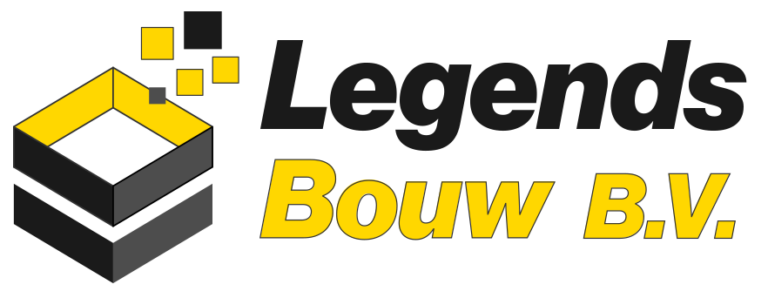Known as the “Daughter of the Baltic”2 or the “Pearl of the Baltic”,349 Helsinki is located at the tip of a peninsula and on 315 islands. The city centre is located on a southern peninsula, Helsinginniemi (“Cape of Helsinki”), which is rarely referred to by its actual name, Vironniemi (“Cape of Estonia”). Population density is comparatively high in certain parts of downtown Helsinki, reaching 16,494 inhabitants per square kilometre (42,720/sq mi) in the district of Kallio, overall Helsinki’s population density is 3,147 per square kilometre.
Acclaimed contemporary composers Kaija Saariaho, Magnus Lindberg, Esa-Pekka Salonen, and Einojuhani Rautavaara, among others, were born and raised in Helsinki, and studied at the Sibelius Academy. The Finnish National Opera, the only full-time, professional opera company in Finland, is located in Helsinki. The opera singer Martti Wallén, one of the company’s long-time soloists, was born and raised in Helsinki, as was mezzo-soprano Monica Groop. Official Finnish government documents and Finnish language newspapers have used the name Helsinki since 1819, when the Senate of Finland moved to the city from Turku, the former capital of Finland. This is how the form Helsinki came to be used in written Finnish.27 When Finland became a Grand Duchy of Finland, an autonomous state under the rule of the Russian Empire, Helsinki was known as Gel’singfors (Гельсингфорс) in Russian, because the main and official language of Grand Duchy of Finland was Swedish. In the Helsinki metropolitan area, public transportation is managed by the Helsinki Regional Transport Authority, the metropolitan area transportation authority.
People found Victory Programs by searching for…
The Design Museum is devoted to the exhibition of both Finnish and foreign design, including industrial design, fashion, and graphic design. Other museums in Helsinki include the Military Museum of Finland, Didrichsen Art Museum, Amos Rex Art Museum, and the Tram Museum fi. The city of Helsinki hosts its own art collection in the Helsinki Art Museum (HAM), primarily located in its Tennispalatsi gallery. A Helsinki to Tallinn Tunnel has been proposed198 and agreed upon by representatives of the cities.199 The rail tunnel would connect Helsinki to the Estonian capital Tallinn, further linking Helsinki to the rest of continental Europe by Rail Baltica. Helsinki is home to two full-size symphony orchestras, the Helsinki Philharmonic Orchestra and the Finnish Radio Symphony Orchestra, both of which perform at the Helsinki Music Centre concert hall.
Together with the cities of Espoo, Vantaa and Kauniainen—and surrounding commuter towns,10 including the neighbouring municipality of Sipoo to the east11—Helsinki forms a metropolitan area. This area is often considered Finland’s only metropolis and is the world’s northernmost metropolitan area with over one million inhabitants. Helsinki is the third-largest municipality in the Nordic countries, after Stockholm and Oslo.
- In the Helsinki metropolitan area, public transportation is managed by the Helsinki Regional Transport Authority, the metropolitan area transportation authority.
- A narrow, 10 kilometres (6.2 mi) long Helsinki Central Park, which stretches from the city centre to Helsinki’s northern border, is an important recreational area for residents.
- This area is often considered Finland’s only metropolis and is the world’s northernmost metropolitan area with over one million inhabitants.
Helsinki was elected host-city of the 1940 Summer Olympics, but due to World War II they were canceled. The Olympics were a landmark event symbolically and economically for Helsinki and Finland as a whole that was recovering from the winter war and the continuation war fought with the Soviet Union. Helsinki was also in 1983 the first city to host the World Championships in Athletics. Helsinki also hosted the event in 2005, thus also becoming the first city Victory Programs Review to host the Championships for a second time. The Helsinki City Marathon has been held in the city every year since 1981, usually in August.190 A Formula 3000 race through the city streets was held on 25 May 1997. In 2009 Helsinki was host of the European Figure Skating Championships, and in 2017 it hosted World Figure Skating Championships.
People also searched for
The former military islands of Vallisaari and Isosaari are now open to the public, but Santahamina is still in military use. The most historic and remarkable island is the fortress of Suomenlinna (Sveaborg).50 The island of Pihlajasaari is a popular summer resort, comparable to Fire Island in New York City. Two rail corridors lead out of Helsinki, the Main Line to the north (to Tampere, Oulu, Rovaniemi), and the Coastal Line to the west (to Turku). The Main Line (päärata), which is the first railway line in Finland, was officially opened on 17 March 1862, between cities of Helsinki and Hämeenlinna.197 The railway connection to the east branches from the Main Line outside of Helsinki at Kerava, and leads via Lahti to eastern parts of Finland. The biggest historical museum in Helsinki is the National Museum of Finland, which displays a vast collection from prehistoric times to the 21st century. The museum building itself, a national romantic-style neomedieval castle, is a tourist attraction.
Twin towns and sister cities
Another major historical museum is the Helsinki City Museum, which introduces visitors to Helsinki’s 500-year history. The University of Helsinki also has many significant museums, including the Helsinki University Museum “Arppeanum” and the Finnish Museum of Natural History. As is the case with all Finnish municipalities, Helsinki’s city council is the main decision-making organ in local politics, dealing with issues such as urban planning, schools, health care, and public transport. The council is chosen in the nationally held municipal elections, which are held every four years.
Helsinki’s own airport, Helsinki-Malmi Airport, is mainly used for general and private aviation. The city of Helsinki is officially bilingual, with both Finnish and Swedish as official languages. The number of people who speak Sámi, Finland’s third official language, is only 68 inhabitants. In Helsinki, 19.6% of the population speak a mother tongue other than Finnish or Swedish.117 As English and Swedish are compulsory school subjects, functional bilingualism or trilingualism acquired through language studies is not uncommon. When Finland became heavily urbanized in the 1960s and 1970s, the district of Pihlajamäki, for example, was built in Helsinki for new residents, where for the first time in Finland, precast concrete was used on a large scale.
International relations
Outside the city centre, much of Helsinki consists of post-war suburbs separated by patches of forest. A narrow, 10 kilometres (6.2 mi) long Helsinki Central Park, which stretches from the city centre to Helsinki’s northern border, is an important recreational area for residents. The City of Helsinki has about 11,000 boat moorings and over 14,000 hectares (35,000 acres; 54 square miles) of marine fishing waters adjacent to the capital region. By the 1910s, Helsinki’s population was already over 100,000, and despite the turbulence of Finnish history in the first half of the 20th century, Helsinki continued to grow steadily.




